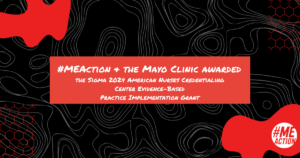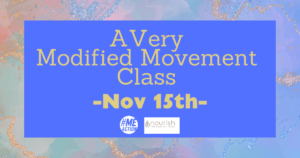Recently, the US National Institutes of Health (NIH) announced its protocol for a new intramural study examining post-infectious fatigue. The community has been eagerly awaiting the publication of the protocol since the October announcement that the NIH was finally making ME/CFS a priority.
Numerous patients and organizations have attempted to initiate a dialogue with the NIH in recent months. Many have particularly encouraged the NIH to involve patients in the planning of the protocol for the intramural study and of the organization’s ME/CFS plan as a whole. Unfortunately, the unilateral announcement of the protocol suggests that the NIH may not have any such intention.
UPDATE #2
From Vicky Whittemore at NIH: “We have received many questions about the study from individuals with ME/CFS, so we sent those off to the investigators at the NIH Clinical Center to provide responses. We will post the responses on the NIH website and I can send you a link when they are posted. ”
UPDATE #1
It appears that the protocol may have been unintentionally released.
The @NIH press officer just told me that this protocol was “inadvertently posted.” It’s still up now though. https://t.co/WbwQa3TzkV
— Julie Rehmeyer (@julierehmeyer) February 8, 2016
What criteria are being used to select patients?
A key point in this engagement has been trying to determine whether the NIH would be using the stricter Canadian Consensus Criteria to recruit patients or possibly the Institute of Medicine’s clinical definition for System Exertion Intolerance Disease. Instead, the study is using the 2005 Reeves Criteria (also known as the “empirical definition”), plus an added requirement of post-infectious onset.
The Reeves criteria is an unusual choice. It is based on the 1994 Fukuda criteria and does not require post-exertional malaise, a symptom the IOM committee deemed core to this disease. Absent post-infectious onset, it misdiagnoses depression as CFS 38% of the time and was rejected by the IOM for overinflating the disease’s actual prevalence. Although used by the Centers for Disease Control (CDC), which was the major author, it is not used by any extramural researchers.
What tests will be done?
Patients enrolled will provide samples of: blood, saliva, stool, cheek skin and cerebrospinal fluid. It is unclear what tests will be done on these samples. They will also undergo an MRI, neurocognitive testing, and heart monitoring, as well as exercise testing. It is unclear whether this is the 2-day CPET, a proposed biomarker for this disease, or another exercise test.
What other populations are being studied?
In addition to post-infectious fatigue patients, the NIH study is recruiting healthy controls, patients with Lyme disease without fatigue, and patients with functional movement disorders.
There is no explanation yet about why patients with functional movement disorders (which the NIH defines as a psychogenic disorder) and patients with Lyme disease are being used as comparison groups.
What are #MEAction’s concerns?
Our primary concern is that patients are being recruited to this study with a non-standard, insufficiently strict set of criteria. The NIH has a history of using strict criteria: its XMRV study, for example, required patients fulfill both the Fukuda and the CCC.
The NIH protocol also appears to require patients be very high-functioning to participate. We hope the following is a typo:
Functional impairment as determined using the Short-Form 36 (SF-36): score of greater than or equal to 70 physical function subscale, or greater than or equal to 50 on role physical subscale, or greater than or equal to 75 on social function subscale, or greater than or equal to 66 on emotional subscale.
#MEAction has repeatedly advised the NIH that their ME/CFS program needs to involve patients in critical decision-making, and that in particular, patient representatives should be including in committees that design study protocols and set research priorities. We believe strongly that this will save money and improve outcomes, and ultimately get us to what we all want – better diagnosis and treatment – much faster.
The NIH has signaled in numerous ways they want to turn over a new leaf with this disease and the community. The unilateral announcement of this protocol and the use of the Reeves definition endanger the credibility of that commitment.
How can you help?
The US Action Working Group is assembling a set of questions to send to the NIH about the study protocol. Please join the #MEAction NIH Working Group and add your questions and feedback to this thread.
Note: the views of #MEAction are not the views of the US Action Working Group.






5 thoughts on “NIH's intramural study protocol raises many questions”
When you state; this is the views of #MEAction, who exactly do you mean?
Hi Gabby,
#MEAction are the views of its co-founders (Beth Mazur and Jen Brea), along with (depending on the issue) our board, our volunteers and sometimes community input, e..g, through polling and online discussions.
Our long-run vision is to be a digital ACT UP with formal, participatory governing mechanisms, etc. We realized soon after launch that we couldn’t do that immediately – we simply don’t have the capacity. But we hope that as we grow our fundraising, staffing, and volunteer capacity, that internal democratic structure is something we can build.
The “This Thread” link isn’t working so I am just adding my 2 cents here.
Just tell them to use a combo of CCC and Fukuda with a mandatory PEM. Researchers like Montoya, Lipkin, Klimas and others are already achieving results doing so.
Also, it may have been unintentionally released, but what was the purpose of its recent work up?
Some of us can function for exercise tests and some can’t and shouldn’t. I think I am pretty iffy on that one so someone would need to be at a higher functioning for this and lets not bother doing anything without a day 2 exercise test with fMRI and NK and Cytokine at least day 2 if not both days or why bother.
Let’s not have anyone with Major Depressive Disorder just to keep things clean for a while. Later you can have them as a group to see what differences there are.
Right away we can do an expansion/replication of Stanford fMRI and I would love to have fMRI’s of 200 ME/CFS, 100 healthy controls, 150 Lyme, 150 Lupus, 150 MS, 150 MDD. This would be an expansion on Stanford scans and then replicate or vice-versa although I think Japan had same results so a small replication may not be needed and right into expansion. Large diverse cohort will end a lot of arguments and although it may not turn out to be a feasible diagnostic tool it can sure prove out a lot of symptoms and brain changes not being experienced by other diseases and illnesses. It can even prove out which diagnostic criteria are working.
Can someone make an argument for the study of the Vagus Nerve Hypothesis? Because I really think Michael Van Elzakker is on to something here.
Just get those RFAs MOVING so Horning and Lipkin, Klimas and Montoya can all get their work accomplished.
All Open Data of course!
Thanks for our excellent comment. You have to join the group in order to access the thread.
I’m positive that the part about the SF-36 scores is just a typo. The 2005 ‘Empirical definition’ paper says the following- “We defined substantial reduction in occupational, educational, social, or recreational activities as scores lower than the 25th percentile of published US population [11] on the physical function (≤ 70), or role physical (≤ 50), or social function (≤ 75), or role emotional (≤ 66.7) subscales of the SF-36.”* It looks like the person who typed up the protocol just got ‘greater than’ and ‘lesser than’ mixed up. That’s just about that little part though, I agree that the bigger issue is the Empirical definition being used to begin with. Screw that goddamn Publisher’s Clearing House criteria nonsense.
*http://bmcmedicine.biomedcentral.com/articles/10.1186/1741-7015-3-19
Comments are closed.